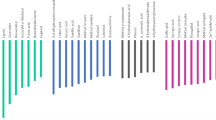Abstract
The genetic algorithm was used effectively to find the optimal values of eight process variables for the maximum laccase production by Daedalea flavida in a stationary culture. The algorithm was modified suitably to improve laccase production with 18 parallel experiments in 4 generations. A high enzyme titer of 65 % was achieved after the optimization and compared to the titer obtained before optimization. To study the effect of the surface immobilized growth on the enzyme production, the fungus was grown on three solid carriers. When cultured on polymer composite fibers, polyurethane foam, or steel wool, at least 2.5 times more biomass was produced, compared to the biomass produced in support-free growth. On the contrary, the mycelia grown on solid support produced much less laccase than non-adhering mycelia. Four parallel runs of batch-fed cultures were done, using the cell mass of D. flavida to evaluate the influence of four different volumes of medium exchanged on laccase production. For sustainable production of the enzyme, complete exchange of medium was favorable, where the laccase activity increased continuously in six consecutive cycles, though, 50 % exchange of medium produced the maximum laccase in terms of mean enzyme activity obtained in six cycles.






Similar content being viewed by others
References
Riva S (2006) Laccases: blue enzymes for green chemistry. Trends Biotechnol 24(5):219–226
Rodríguez-Couto S, Toca-Herrera JL (2006) Industrial and biotechnological applications of laccases: a review. Biotechnol Adv 24(5):500–513
Weuster-Botz D (2000) Experimental design for fermentation media development: statistical design or global random search? J Biosci Bioeng 90(5):473–483
Rao CS, Sathish T, Mahalaxmi M, Laxmi GS, Rao RS, Prakasham RS (2008) Modelling and optimization of fermentation factors for enhancement of alkaline protease production by isolated Bacillus circulans using feed-forward neural network and genetic algorithm. J Appl Microbiol 104(3):889–898
Gurunathan B, Sahadevan R (2011) Design of experiments and artificial neural network linked genetic algorithm for modeling and optimization of L-asparaginase production by Aspergillus terreus MTCC 1782. Biotechnol Bioproc Eng 16(1):50–58
Dutta JR, Dutta PK, Banerjee R (2005) Modeling and optimization of protease production by a newly isolated Pseudomonas sp. using a genetic algorithm. Proc Biochem 40(2):879–884
Birhanli E, Yesilada C (2006) Increased production of laccase by pellets of Funalia trogii ATCC 200800 and Trametes versicolor ATCC 200801 in repeated-batch mode. Enzyme Microb Technol 39(6):1286–1293
Pickard MA, Roman R, Tinoco R, Vazquez-Duhalt R (1999) Polycyclic aromatic hydrocarbon metabolism by white rot fungi and oxidation by Coriolopsis gallica UAMH 8260 laccase. Appl Environ Microbiol 65(9):3805–3809
Holland JH (1975) Adaptation in natural and artificial systems. University of Michigan Press, Ann Arbor
Revankar MS, Lele SS (2006) Enhanced production of laccase using a new isolate of white rot fungus WR-1. Proc Biochem 41(3):581–588
Sethuraman A, Akin DE, Eriksson K-EL (1999) Production of ligninolytic enzymes and synthetic lignin mineralization by the bird’s nest fungus Cyathus stercoreus. Appl Microbiol Biotechnol 52(5):689–697
Chernykh A, Myasoedova N, Kolomytseva M, Ferraroni M, Briganti F, Scozzafava A, Golovleva L (2008) Laccase isoforms with unusual properties from the basidiomycete Steccherinum ochraceum strain 1833. J Appl Microbiol 105(6):2065–2075
Palmieri G, Giardina P, Bianco C, Fontanella B, Sannia G (2000) Copper induction of laccase isoenzymes in the ligninolytic fungus Pleurotus ostreatus. Appl Environ Microbiol 66(3):920–924
Brijwani K, Rigdon A, Vadlani PV (2010) Fungal laccases: production, function, and application in food processing. Enzyme Res. doi:0.4061/2010/149748 (article ID 149748)
Arora DS, Sandhu DK (1985) Laccase production and wood degradation by a white-rot fungus Daedalea flavida. Enzyme Microb Technol 7(8):405–408
Thurston CF (1994) The structure and function of fungal laccases. Microbiol 140(1):19–26
Surry PD, Radcliffe NJ (1996) Inoculation to initialize evolutionary search. In: Fogarty TC (ed) Evolutionary computing: artificial intellegence and the simulation of behaviour workshop. Springer, Brighton
Dhawan S, Kuhad RC (2002) Effect of amino acids and vitamins on laccase production by the bird’s nest fungus Cyathus bulleri. Bioresour Technol 84(1):35–38
Levin L, Melignani E, Ramos AM (2010) Effect of nitrogen sources and vitamins on ligninolytic enzyme production by some white-rot fungi. Dye decolorization by selected culture filtrates. Bioresour Technol 101(12):4554–4563
Haars A, Hűttermann A (1983) Laccase induction in the white-rot fungus Heterobasidium annosum (Fr.) Bref. (Fomes annosus Fr. Cooke). Arch Microbiol 134(4):309–313
Rodriguez-Couto S, Sanroman MA, Hofer D, Gubitz GM (2004) Stainless steel sponge: a novel carrier for the immobilisation of the white-rot fungus Trametes hirsuta for decolourization of textile dyes. Bioresour Technol 95(1):67–72
Author information
Authors and Affiliations
Corresponding author
Electronic supplementary material
Below is the link to the electronic supplementary material.
Rights and permissions
About this article
Cite this article
Singha, S., Panda, T. Improved production of laccase by Daedalea flavida: consideration of evolutionary process optimization and batch-fed culture. Bioprocess Biosyst Eng 37, 493–503 (2014). https://doi.org/10.1007/s00449-013-1014-3
Received:
Accepted:
Published:
Issue Date:
DOI: https://doi.org/10.1007/s00449-013-1014-3




